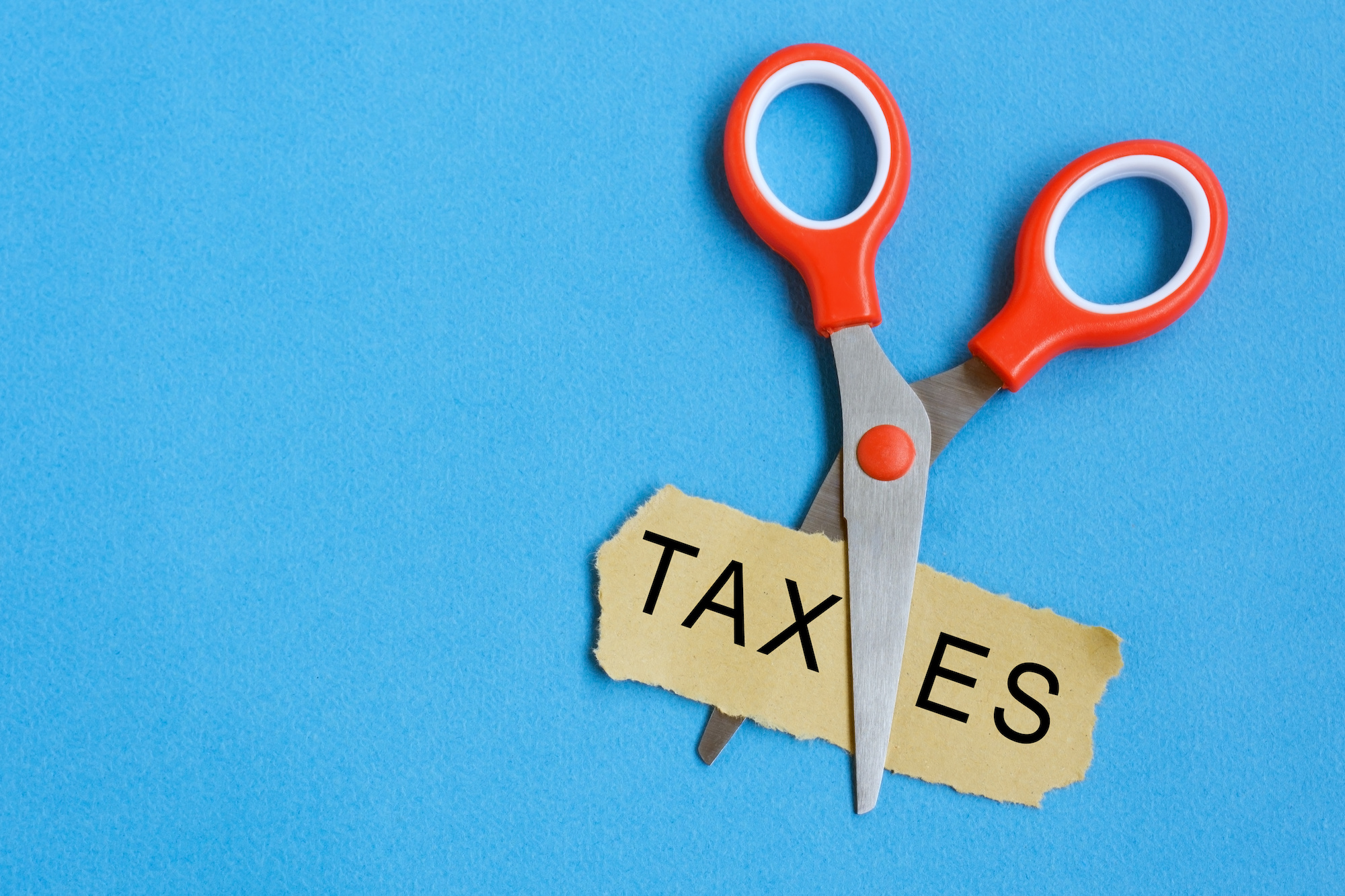

The supply-side investment surge that never was
More From This Collection
Tax cuts have long been the heart of the Republican Party’s economic policy. Republican presidential primaries play host to bidding wars to cut taxes the furthest and the past two Republican presidents have made tax cuts the centerpiece of their legislative agendas. But are they working? The evidence suggests not.
Without question, the years following the Tax Cut and Jobs Act of 2017 (TCJA) were good ones for the American economy. Unemployment was low, income growth was high. But such results are not prima facie support for a tax cut’s success, especially when the federal government also pursues an extraordinarily stimulative monetary policy (low interest rates) and fiscal policy (large deficits) at the peak of the business cycle. Never has America run its economy so “hot,” and the results were what one might expect in the short run, though almost certainly unsustainable.
In assessing the effects of recent supply-side tax cuts, including TCJA and the Bush tax cuts of 2001 and 2003, it is not enough to observe positive economic performance. A supply-side tax cut is supposed to achieve its effects in a specific way, by improving incentives and spurring business investment. If that does not happen, the tax cut did not work.
A helpful starting point for the proper assessment of TCJA is research presented by President Donald Trump’s Council of Economic Advisers (CEA) in 2018 and 2019. When Trump took office, Speaker of the House Paul Ryan and a cadre of Trump advisors pushed aggressively to make a tax cut the initial legislative priority. Eager to vindicate their strategy, they began pointing soon after its implementation to preliminary data from the U.S. Department of Commerce’s Bureau of Economic Analysis (BEA) to demonstrate a strong uptick in investment and growth. Unfortunately, BEA has since revised those figures, and TCJA’s effect has vanished.
Investment
For example, presenting to the American Economic Association’s Annual Meeting on January 4, 2019, CEA chair Kevin Hassett highlighted the “contribution of nonresidential fixed investment to real GDP growth” as a key metric for detecting the positive effect of reducing the corporate tax rate. CEA had estimated that this contribution should rise above the pre-existing trend by 0.2 to 0.4 percentage points.
The average contribution of nonresidential fixed investment to real GDP growth over the business cycle, from the prior recession’s end in Q3:2009 to passage of TCJA in Q4:2017, had been 0.64 percentage points. Sure enough, in the first three quarters of 2018, after TCJA’s passage, that figure had risen to 0.99 percentage points.
“And so, if someone were to say, Did the tax cut work on investment? … Did they work the way that we anticipated?” observed Hassett, “Then you’d have to say, well yeah, because we have this ex-ante evidence of what the proposed effect was going to be and if you look at what actually happened it came in right about there.” Further, Hassett argued that other exogenous factors could not mask the tax cut’s effect: “The tax shock in the year after a big tax reform is so big relative to everything else that historically has happened that the ceteris paribus [other things equal] assumption must be about reasonable, because otherwise we wouldn’t keep getting the same answer.”
Unfortunately, the 2018 statistics available at the start of 2019 were preliminary, and BEA would revise them as it received further data. In 2023, looking back on that period, the story is very different. In fact:
- The baseline figure for the business cycle up until TCJA’s passage was higher: 0.72 percentage points.
- The figure for the first three quarters of 2018 was lower: 0.84 percentage points.
- The figure for the full year in 2018 was lower still: 0.75 percentage points.
- The figure for the full year in 2019 fell even further: 0.44 percentage points.
All told, TCJA’s actual effect on this key investment measure appears to have been less than one-tenth of what CEA expected and virtually indistinguishable from zero.
A similar story repeats for growth in business investment, highlighted in both CEA speeches and the 2019 Economic Report of the President. In late 2018, the growth rate for real private nonresidential fixed investment appeared to have surged considerably over its pre-TCJA average. But looking back with 2023’s revised data, the gains vanish. In fact:
- The baseline figure for the business cycle up until TCJA’s passage (Q3:2009 to Q4:2017) was 5.8%.
- The figure for 2018 was only 5.6%.
- The figure for 2019 was even lower: 3.2%.
BEA statistics also disaggregate measures of business investment into its components: structures, equipment, and intellectual property. This is helpful because TCJA’s legal effect varied by component. The law created positive incentives for equipment investment in Q4:2017, while incentives for structures investment did not take hold until Q1:2018 (so its effect could have been felt sooner). Intellectual property investments saw less of a reduction in their effective tax rate. Insofar as TCJA affected business investment, growth should have surged earliest for equipment and later for structures, and less for intellectual property. None of this happened:
- As compared to the business cycle from Q3:2009 to Q4:2017, the average growth rate for business investment in structures during the four quarters after TCJA took effect rose 2.4 percentage points.
- As compared to the business cycle from Q3:2009 to Q3:2017, the average growth rate for business investment in equipment during the four quarters after TCJA took effect fell by 3.4 percentage points.
- As compared to the business cycle from Q3:2009 to Q4:2017, the average growth rate for intellectual property investment in structures during the four quarters after TCJA took effect rose 3.8 percentage points.
Remarkably, the rate of growth in structures investment jumped more in the fourth quarter of 2017 than did the rate of growth in equipment investment, even though TCJA should have been affecting only equipment investment at that point.
Finally, any analysis of TCJA’s effects must separate the short-run effect of pulling forward investment from the long-run effect of raising the overall level of capital investment. Equipment investment provides the best illustration. Allowing corporations to expense the full cost of any investments made in Q4:2017 does seem to have had some immediate effect. Equipment investment grew at an annualized rate of 12.9% that quarter. The first quarter of 2018 experienced a 7.3% growth rate. But what followed were two quarters of 0.7% and 0.0% growth. All told, the average growth rate in equipment investment for TCJA’s first four quarters (5.2%) was little different from the prior four quarters (4.8%). In TCJA’s second year, average growth in equipment investment fell to 1.7%. All told, had growth proceeded post-TCJA at the same rate as in the four quarters pre-TCJA, equipment investment at the end of 2019 would have stood at $1.30 trillion (annualized). With TCJA, it reached only $1.22 trillion. Over the period, equipment investment would have totaled $2.78 trillion; in fact, it totaled $2.77 trillion.
TCJA’s premise was that lower tax rates would improve incentives for business investment and thereby generate economic growth. The measures used by the Trump administration to illustrate the success of this policy in fact show that trends in business investment did not depart from their pre-TCJA trends and, if anything, weakened by 2019.
Growth
Perhaps unsurprisingly, given TCJA’s apparent failure to spur higher business investment, little evidence exists that it boosted overall economic growth. Many economists would argue that the year after TCJA’s passage would be too early to look for this effect, but that was not the position of the Trump White House’s Council of Economic Advisers. Based on three quarters of preliminary 2018 data on GDP growth, the 2019 Economic Report for the President reported that the estimated 2018 growth rate of 3.2% was a full 1.0 percentage point higher than the pre-TCJA average for the business cycle of 2.2%, and 1.4 percentage points higher than the CEA’s own pre-TCJA baseline for 2018, precisely in keeping with their preferred models.
In his remarks to the AEA, CEA chair Kevin Hassett observed, “Now granted the ceteris paribus assumption is lurking in the background but the fact that last year we were saying that you should use these models to think what’s gonna happen next year and they say this is what the growth effect is going to be and here we are a year later and … it’s exactly what the models say.”
Unfortunately, as more data accumulated, and the Bureau of Economic Analysis updated its statistics, the boost to growth vanished. The pre-TCJA trend rose from 2.2% to 2.4%. The growth rate for the first three quarters of 2018 fell from 3.3% to 2.7%. The fourth quarter came in at only 0.6%, reducing the year’s rate to 2.1%. By CEA’s own standard, TCJA’s effect on growth was now somewhere between zero and negative. Their models proved badly inconsistent with reality.
As the Wall Street Journal’s Greg Ip observed at the end of 2019, “The U.S. economy did enjoy a burst of 3% annualized growth after the tax cut first took effect at the start of 2018. But it has since slipped. It grew at a 1.9% annual rate in the third quarter. In the past 12 months, the economy grew 2%, about the same as it averaged from 2011 through 2017. This should not come as a surprise. The administration’s claims rested on the belief that cutting the corporate tax rate to 21% from 35% and allowing companies to immediately write off the cost of new equipment would boost business investment and thus worker productivity and wages. Yet numerous other advanced countries had already cut their corporate rates in the prior two decades without experiencing anywhere near the growth boost the Trump administration promised. Many experienced no boost at all.”
The Bush Tax Cuts
The so-called “Bush tax cuts” of 2001 and 2003 display a similar pattern in their effects on both investment and growth. The Economic Growth and Tax Relief Reconciliation Act (EGTRRA), passed in June 2001, focused mainly on reducing individual income taxes, in response to both unprecedented budget surpluses and an economic recession. Those tax cuts, designed to phase in gradually, were then accelerated by the Jobs and Growth Tax Relief Reconciliation Act (JGTRRA), passed in May 2003, which also reduced capital gains tax rates.
The effects of these tax cuts are difficult to isolate because, coming against the backdrop of a recession, there is no clear trend from which to establish a baseline. Nevertheless, the results are strikingly poor under almost any parameters.
For example, using the “contribution of nonresidential fixed investment to real GDP growth” emphasized in the analysis of TCJA, the years after the Bush tax cuts appear weak even by the standards of the preceding recession. The contribution during the two years before passage of EGTRRA was stronger than in the two years after. This remains the case if looking back and forward four years, to incorporate both tax cuts. Indeed, across the entire 1990s business cycle, which followed substantial tax hikes, the contribution was dramatically higher than in the 2000s business cycle that took place in a lower-tax environment.
Similarly, the growth rate for business investment was higher in the two-year and four-year periods before the start of the tax cuts in 2001 as compared to after their implementation, and the growth rate in the higher-tax 1990s business cycle was almost twice as high as in the lower-tax 2000s cycle.
As with TCJA, a failure to stimulate investment likewise failed to yield stronger growth. Growth was higher across the pre-EGTRRA two- and four-year windows and across the higher-tax business cycle as a whole.
A broad scholarly consensus condemns the Bush tax cuts as costly and ineffective, and indeed links the two issues. According to a 2016 paper by the Brookings Institution’s William Gale and Dartmouth College’s Andrew Samwick (who served as chief economist for George W. Bush’s Council of Economic Advisers in the year after JGTRRA’s passage), “A variety of forms of evidence suggest that the impact on growth of [the Bush tax cuts] was negligible. A cursory look at growth between 2001 and 2007 (before the onset of the Great Recession) suggests that overall growth rate was both mediocre – real per-capita income grew at an annual rate of 1.5 percent during that period, compared to 2.3 percent from 1950 to 2001 – and was concentrated in housing and finance, two sectors that were not favored by the tax cuts. There is, in short, no first-order evidence in the aggregate data that these tax cuts generated growth. Careful microeconomic analyses give similar conclusions.”
Gale and Samwick emphasize that “it is by no means obvious, on an ex ante basis, that tax rate cuts will ultimately lead to a larger economy in the long run” and that “the historical evidence and simulation analyses suggest that tax cuts that are financed by debt for an extended period of time will have little positive impact on long-term growth and could reduce growth.”
As the Mercatus Center’s Matthew Mitchell and Andrea O’Sullivan observed in What Went Wrong with the Bush Tax Cuts, “Tax cuts alone do not equal free-market economics, nor do they equal fiscal reform. Cutting taxes allows policymakers to give voters something they want, while appearing to rein in the size of government. But this is a temporary illusion unless the tax cuts are combined with necessary reductions in spending—a far more difficult but also the more important task” (emphasis in original). Condemning the structure and profligacy of EGTTRA and JGTTRA, they argued, “the experience should prompt policymakers to utilize its lessons when crafting and implementing fundamental spending and tax reform.”
Unfortunately, those lessons had not been learned by TCJA’s architects. And if the proposals and rhetoric issuing forth in the 2024 Republican presidential primary are any indication, the party may be doomed to repeat history at least one more time.
More From This Collection
The Curse of Voodoo Economics
Conservatives should favor limited government, not reflexive tax cuts
Rebuilding the Supply-Side Platform
Boosting American investment and production when tax cuts will not
Learning the Lessons of Supply-Side Economics
Conservatives should bring supply-side thinking to issues beyond business investment












